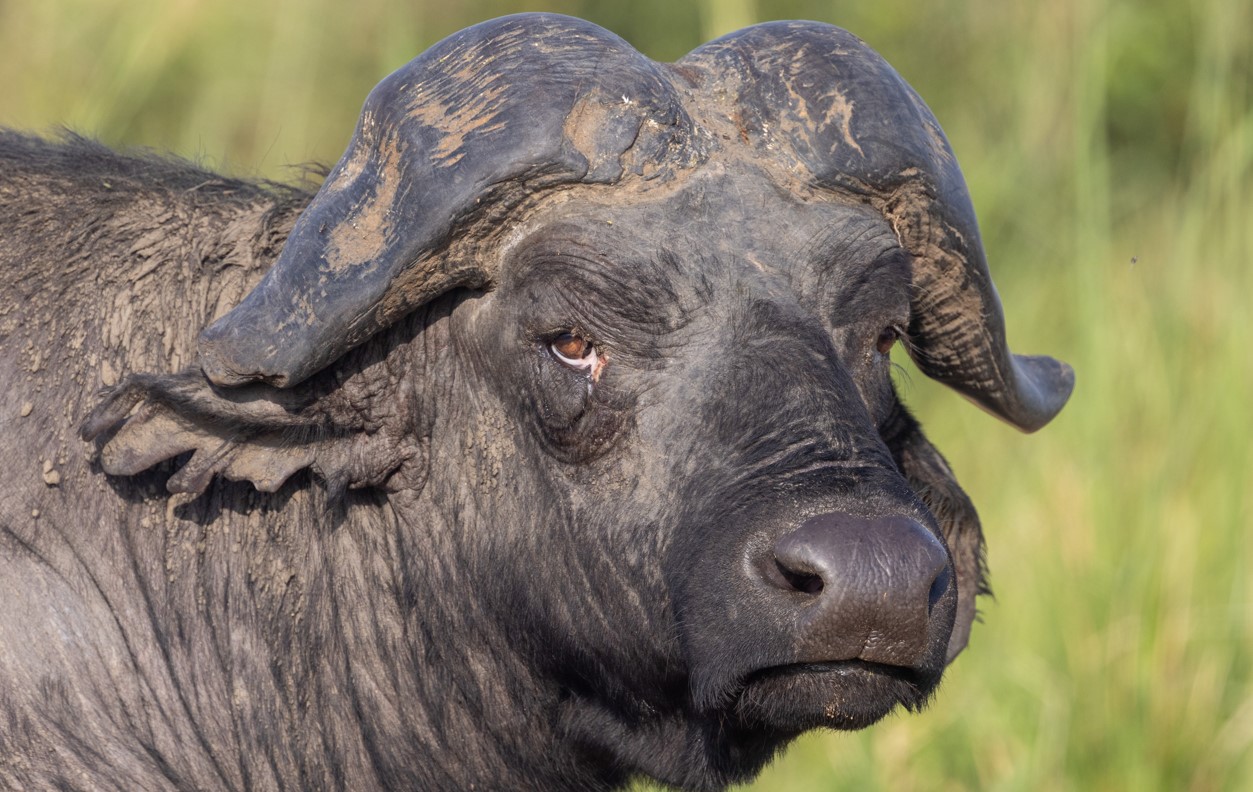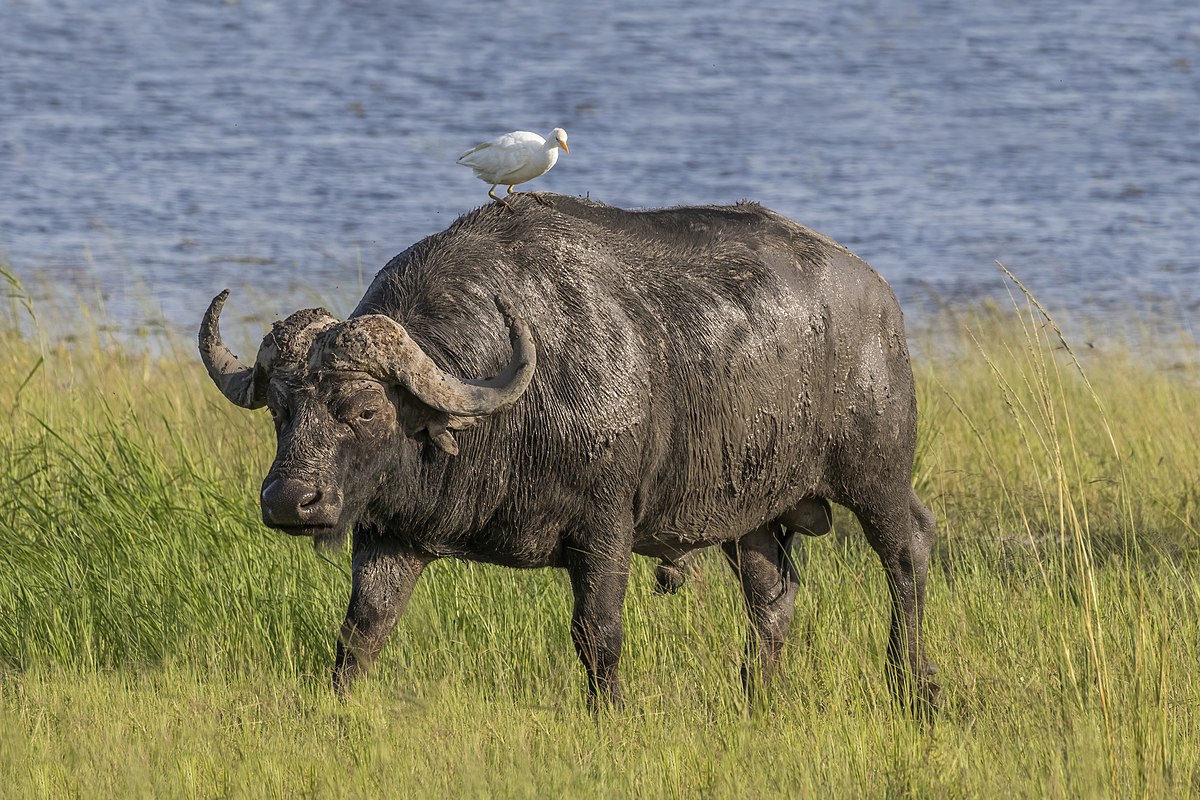African Buffalo: Facts, Weight, Diet, Habitat & Predators
Explore the remarkable African buffalo, sometimes referred to as the Cape buffalo. Discover intriguing information about African buffaloes, including their behavior, dimensions, and longevity. The African Buffalo is a unique species native to Africa and is the largest sub-Saharan bovine on the continent.
The buffaloes are categorized into certain sub-species, including Cape buffaloes, woodland buffaloes, Central African buffaloes, West African savannah buffaloes, and Southern savannah buffaloes. Among all these subspecies, the Cape Buffaloes are the largest bulls, weighing up to 2,000 pounds (907 kg).
African buffaloes are classified among the most perilous animals in Africa, consequently referred to as “black death.” The African buffalo’s scientific designation is Syncerus caffer.
Biological Subspecies of African Buffalo: Cape Buffaloes.
This is the predominant and widely recognized buffalo species in Africa. The Cape buffalo is larger than other species of African buffalo. They are located in the southern and eastern regions of Africa.
The African Forest Buffalo.
This is the smallest subspecies of African buffalo, also referred to as the “dwarf buffalo” or the Congo buffalo. The dimensions and structure of the forest buffaloes’ horns distinguish them from other species; specifically, their horns are significantly smaller than those of other African buffalo subspecies.

The Central African Buffaloes.
They inhabit the rainforests of Central Africa, specifically in nations including Zimbabwe, Uganda, Tanzania, the Democratic Republic of the Congo, South Africa, and Zambia.
The West African Savannah Buffaloes.
These are located in West Africa, specifically in the southern regions of the Saharan desert, including Ghana, southern Senegal, northern Guinea, Mali, and Ivory Coast.
12 Intriguing Facts Regarding the African Buffalo; Scientific Classification: African buffaloes, or Syncerus caffer, have unique appearance, social behavior, and ecological adaptations, significantly influencing African ecosystems as huge herbivores with a hierarchical structure and cooperative defense strategies.
African buffaloes are sociable creatures that operate and travel collectively in herds of approximately 2000 individuals. Members of the same subgroup frequently rest with their heads inclined towards one another. Buffaloes exhibit mutual grooming habits and collaborative defense techniques.
African buffaloes employ a voting mechanism to ascertain their migratory orientation. They navigate in the direction indicated by the majority of the herd during resting periods.
Distinctive Behavior: Buffaloes exhibit a propensity to squat and rub their necks and heads on the ground, particularly when poised to strike.
African buffaloes establish associations with several bird species, such as ox-peckers, which consume insects residing on their bodies and frequently alert the buffaloes to impending threats.
Unyielding Nature: Buffaloes have a relentless disposition, adept at enacting vengeance to the degree of orchestrating ambushes against hunters who have previously assaulted them, irrespective of the elapsed time.

Sensory Adaptations: Despite possessing limited vision in daylight, African buffaloes compensate with acute auditory and olfactory capabilities, allowing them to detect predators such as lions.
Bulls participate in sparring matches, utilizing their horns to hook, primarily to assess supremacy among themselves.
Buffaloes frequently engage in mud bathing to shield themselves from bug attacks and to control their body temperature.
African buffaloes have seasonal births during the rainy season, when food and water resources are abundant, hence ensuring best conditions for calf survival.
Formidable Fighters: Buffaloes are renowned for their ability to kill hunters, with higher success rates than other wildlife species. They present a considerable threat to predators such as lions and can prevail in conflicts.
Sexual Dimorphism: Male and female buffaloes can be distinguished by the presence of a shield-like structure known as “the boss” between the horns of males, which is lacking in females.
African Buffalo Size;
The African male buffalo can weigh up to 2,000 pounds (907 kg) and reach a height of 6 feet, while the female buffalo can weigh up to 1,000 pounds and measure 4 to 5 feet in length. The African buffalo calf can weigh between 30 and 70 pounds at birth.
The African buffalo can live for 18 to 25 years in the wild, contingent upon the availability of forage and water sources. In captivity, they possess an extended lifetime of around 29 years, attributable to the absence of hazards such as predators and other natural adversaries.
African Buffalo Adaptations: During the wet seasons, buffaloes acquire a dense woolen coat to shield themselves from cold winds and low temperatures.
Syncerus caffer (African buffaloes) utilize grunts and bellows for communication among themselves.
Cape buffaloes consistently travel in large herds of approximately 2000 individuals to safeguard themselves from predators.
African buffaloes have established a symbiotic relationship with certain African birds, such as the oxpecker. This avian species perches on the backs of buffaloes, extracting ticks and other parasitic insects from their skin.
The body size and the development of mature male buffalo horns constitute a significant adaptation for self-defense against natural predators such as lions, leopards, and hyenas.
African buffaloes possess wide and broad hooves that provide stability for their substantial body weight.
African Buffaloes possess an extended tongue that facilitates the collection of grass and other food items for mastication.
Diet of African Buffalos: What is the dietary composition of African buffalo?
African buffaloes are herbivores, mostly consuming grasses, plants, and other vegetation. In the dry season, when vegetation is sparse, African buffaloes consume bushes, tubers, and other roots.
African buffaloes excavate roots and tubers from the soil. In elevated temperatures, buffaloes may ingest 30-40 liters of water daily and can consume up to 17 kg of food each day.
African Buffaloes Mating: Male buffaloes typically mate with multiple cows, whilst females generally mate with a single bull. Buffaloes have only two breeding seasons annually.
Male calves attain sexual maturity at 3-4 years of age; however, adult males in the herd inhibit their mating until they are 7-8 years old.
Cows typically give birth to a single calf, with parturition occurring predominantly during the rainy season when adequate nourishment is available for the neonates.
The habitat of African buffaloes mostly consists of savannah grasslands, rainforests, and woodlands throughout Africa, facilitating convenient access to food and water.
Savannahs and grasslands provide the predominant habitats for this particular species, since they provide ample forage and tall grasses that serve as both shelter and concealment from predators.
Compilation of African National Parks for Buffalo Viewing
Kruger National Park, South Africa, Serengeti National Park, Tanzania; Kidepo Valley National Park, Uganda; Masai Mara National Reserve, Kenya; Chobe National Park, Botswana; Hwange National Park, Zimbabwe; Queen Elizabeth National Park, Uganda; South Luangwa National Park, Zambia; Etosha National Park, Namibia; Murchison Falls National Park, Uganda; Amboseli National Park, Kenya; Mana Pools National Park, Zimbabwe.
These parks provide exceptional opportunity to watch cape buffaloes in their natural surroundings, alongside a variety of other wildlife species.
African Buffalo Predators and Threats
The primary threat to African buffaloes is human activities, including poaching and the establishment of towns, which result in habitat degradation.
African buffalos face threats from various predators, including lions, Nile crocodiles, and hyenas. Nile crocodiles are adept in killing adult buffaloes, whereas lions, hyenas, and leopards primarily target weaker calves.
Nonetheless, these predators encounter significant challenges in defeating and killing adult buffalo during confrontations, mostly because the buffalo possess considerable strength and adeptly utilize their horns for protection.
Encounters between African buffalo and lions in one-on-one confrontations typically conclude with the demise of the lions.
African Buffalo Conservation Status;
Conservation status of the African buffalo is threatened by habitat loss. The conservation status of the African buffalo is threatened by habitat loss. To avert this, wildlife authorities from various nations have secured appropriate reservations of habitats for these animals.
Armed park rangers have been appointed to safeguard the animals and defend them against poachers and predators. On specific occasions, rangers have engaged in gunfire with poachers and, at times, have lost their lives; refer to wildlife news for detailed accounts.
Stringent security measures have been implemented at the perimeters of protected zones to deter unlawful human encroachments within animal habitats.
Restrictive barriers have been constructed to inhibit predators from accessing the African buffaloes.
Substantial fines have been levied on individuals apprehended for poaching within designated reserves to mitigate such activities.
Finally, authorities have interacted with residents near protected areas, employed them, educated them on the significance of these animals, and assisted them in diversifying from hunting and nomadic agriculture.
Further information regarding the research and conservation of elephants, rhinos, and buffaloes can be found here.
